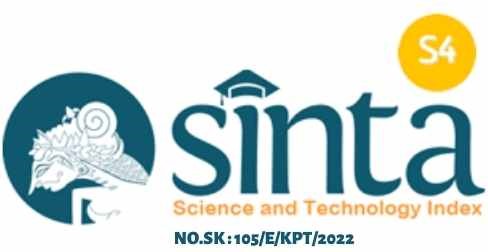ANALISIS INFORMASI KEUANGAN DALAM MENGEVALUASI KINERJA PEMERINTAH KABUPATEN DAIRI
DOI:
https://doi.org/10.34128/jra.v5i1.129Keywords:
Financial Information Analysis, Financial Performance, District GovernmentAbstract
This study aims to analyze the financial performance of local governments in terms of how many including: the Regional Financial Autonomy Scale, Fiscal Decentralization Amount, PAD Effectiveness, PAD Efficiency, Regional Fiscal Effectiveness, Regional Fiscal Efficiency, and BUMD Contribution Amount. This research is a quantitative descriptive study with the subject of research on regional financial information in Dairi Regency in 2013-2020, the data collection method used is the documentation method. The data analysis technique used is financial scale analysis. The results show that the Financial Autonomy Scale is still very low with an average value of 9.40%, Regional Financial Independence is very high with a value of 80.54%, and the amount of Fiscal Decentralization of 6.89% is categorized as very low. The effectiveness of PAD of 97.44% is included in the sufficient size. PAD efficiency in the group is very efficient with a value of 0.92%. Fiscal Effectiveness is 96.28% of a fairly effective measure. Regional Fiscal Efficiency with a value of 6.54% can be declared efficient. The amount of BUMD's contribution with a value of 13.23% is relatively low. The implications of this research as an evaluation for the regional/central government and the community in assessing the performance of the Dairi local government for the past 8 years are seen from several aspects.
References
Abdul Halim. (2012). Akuntansi Sektor Publik Akuntansi Keuangan Daerah (4th ed.). Penerbit Salemba Empat.
Bisma, & Susanto. (2010). Evaluasi Kinerja Keuangan Daerah Pemerintah Provinsi Nusa Tenggara Barat Tahun Anggaran 2003 – 2007. Ganec Swara, 4(3), 75–86.
Mahmudi. (2016). Analisis laporan keuangan pemerintah daerah. Yogyakarta : Unit Penerbit dan Percetakan Sekolah Tinggi Ilmu Manajemen YKPN, 2016.
Mahsun, M. (2019). Pengukuran Kinerja Sektor Publik 1-9. Tangerang Selatan : Universitas Terbuka, 2019.
Munandar, A. (2017). Dampak Akurasi Penerapan Sistem Informasi Akuntansi dan Kepatuhan pada Standar Akuntansi Keuangan Entitas Tanpa Akuntabilitas Publik terhadap Kualitas Laporan Keuangan di Badan Amil Zakat Nasional Kota Bandung. Tesis.
PP. (2017). Peraturan Pemerintah Nomor 54 Tahun 2017 tentang Badan Usaha Milik Daerah. http://peraturan.go.id/peraturan/view.html?id=11e81db95b48b810c0bd303833303537
Siswanto, & Maylani, D. A. (2022). Analisis Laporan Keuangan Untuk Menilai Kinerja Keuangan Pemerintah Daerah. Nominal: Barometer Riset Akuntansi Dan Manajemen, 11(1), 184–195.
Susilawati, D., Kusumastuti Wardana, L., & Fajar Rahmawati, I. (2018). Menilai Kinerja Keuangan dengan Analisis Rasio Keuangan: Studi Kasus BKAD Sleman. Jati: Jurnal Akuntansi Terapan Indonesia, 1(2), 91–98. https://doi.org/10.18196/jati.010210
Taras, T., & Artini, L. G. S. (2017). Analisis Pendapatan Asli Daerah (Pad) Dalam Upaya Pelaksanaan Otonomi Daerah Di Kabupaten Badung Bali. E-Jurnal Manajemen Unud, 6(5), 2360–2387.
UU, R. (2014). UU RI No. 23 Tahun 2014 Tentang Pemerintahan Daerah. https://hsgm.saglik.gov.tr/depo/birimler/saglikli-beslenme-hareketli-hayat-db/Yayinlar/kitaplar/diger-kitaplar/TBSA-Beslenme-Yayini.pdf
UU RI. (2004). UU RI No. 33 Tahun 2004 Tentang Perimbangan Keuangan Antara Pemerintah Pusat Dan Pemerintahan Daerah.
Downloads
Published
How to Cite
Issue
Section
License
Copyright (c) 2022 Sahala purba, Rimky Mandala Putra Simanjuntak, Erissa Antheresya Butar Butar

This work is licensed under a Creative Commons Attribution-NonCommercial-ShareAlike 4.0 International License.














